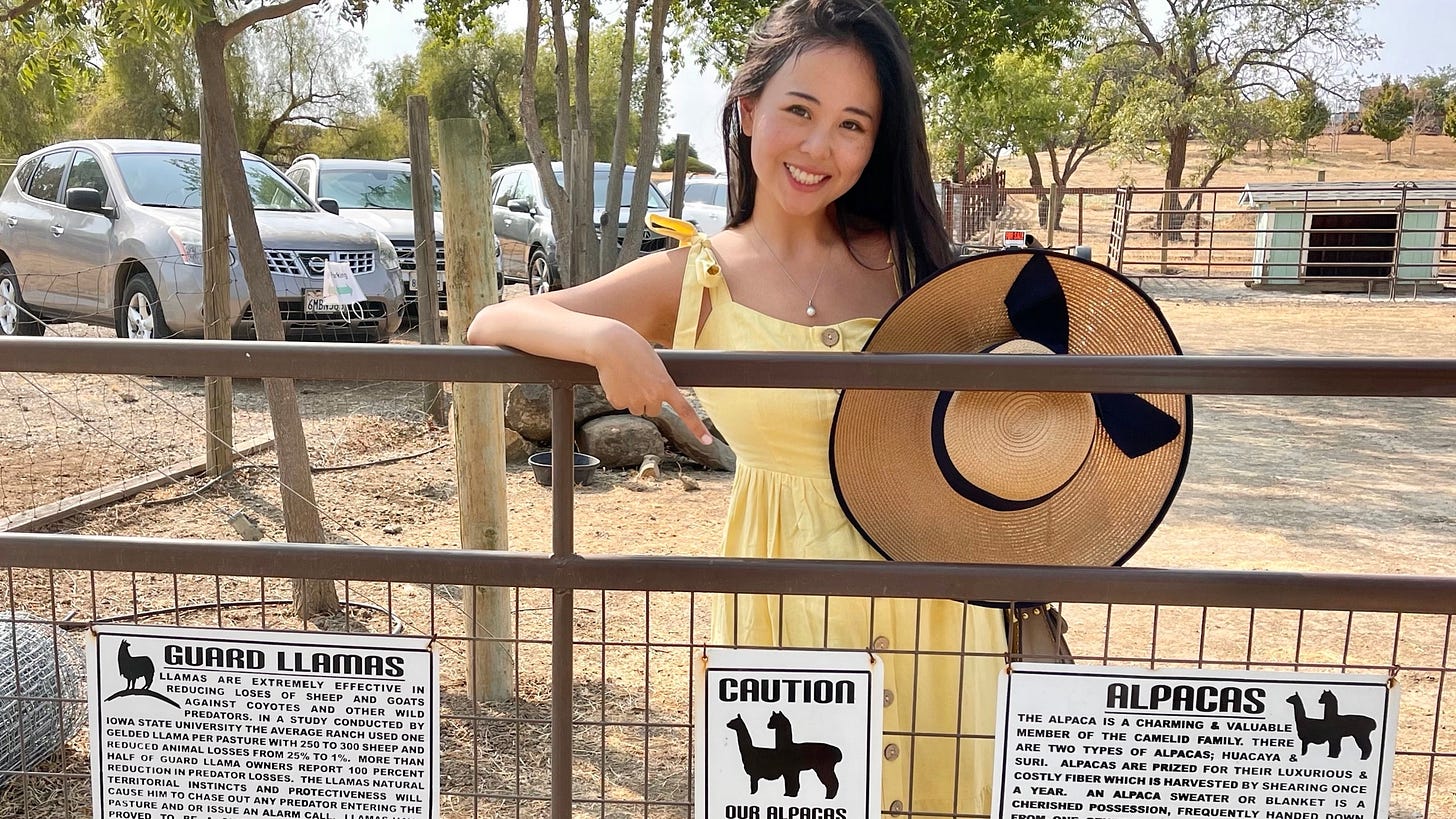If we graph “trust in others” linearly from zero to one hundred, where:
0 means I expect this person to actively betray or act against my interests
50 means I verify information from this person before considering it legitimate
100 means I trust this person with my life
Then I grew up trusting at 90 percent by default.
Growing up, my parents loved me a great deal. Like most Chinese parents, they didn’t tell me with words, but I never once doubted it from their actions: the bowls of cut fruit, my drawings they proudly hung in their offices, their quiet fortitude and long hours at work. They also believed love equals protection, and went above and beyond to shield me from some of the harsher realities of the world. I, in turn, grew up believing I could always count on benevolent others to look out for my interests.
This worked until I stepped into the real world.
Last year my cofounder, whom I met at twenty-two, diagnosed my desire to start a llama farm1 as “not at all surprising.” First impression of me years ago: Wow this girl is really naive. Most people develop holistically and learn to be appropriately distrusting or cautious over adolescence. I didn’t seem to have learned that. Catching up in my twenties involved interacting with all sorts of people, not all of whom were principled or honest.
Of course you’d want to be ensconced in the land of soft and fluffy things where no one can hurt you, he said. There’s something simple and appealing about living off the land.
I’ve since learned to dial it back (e.g., trusting at 75 or 80 percent), but I fundamentally struggle to change my nature. Trusting at 90 percent by default is to assume the the good nature of others. Without this, some incredible friendships, work connections, and business partnerships would’ve never taken off.
Assuming the good nature of others creates velocity. Of course this backfires in some instances. The key, I’ve come to justify, is to learn from it and avoid repeat interactions with those who’ve broken my trust. Being willing to get hurt or lose in the short term has, so far, helped me go farther in the long term.
That’s a trade-off I’m willing to make.
One Llama Farm Lane will be a Spanish-style sanctuary by the sea for llamas and alpacas (and human friends too). And if by some error of capitalism I become a deca-billionaire, my plan is to acquire Alcatraz, rename it Alpacatraz, and send all the naughty alpacas there—for a lifetime of gentle rehabilitation and acceptance.




